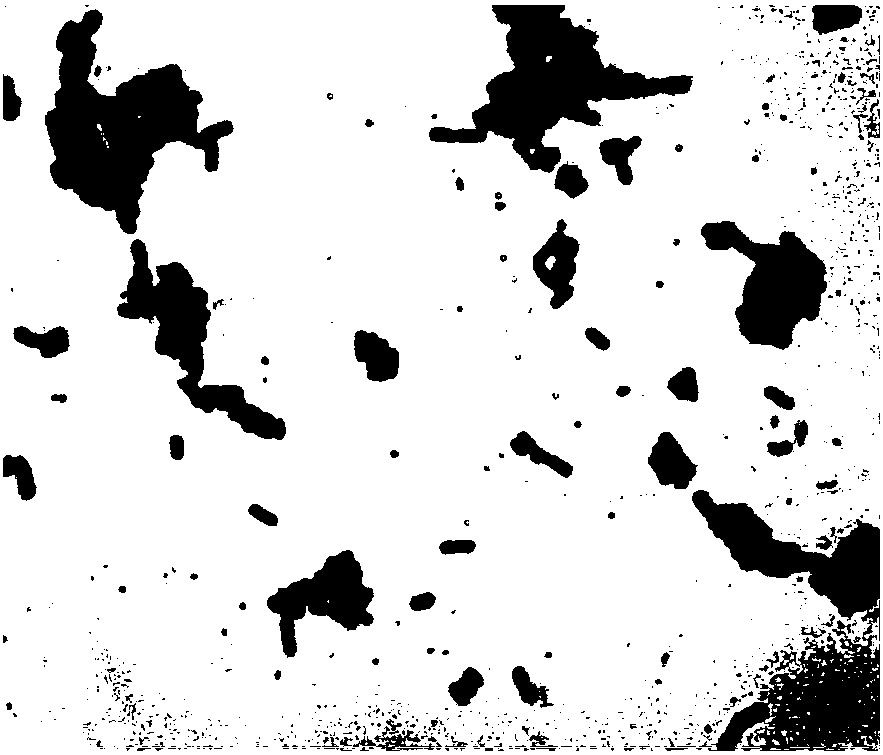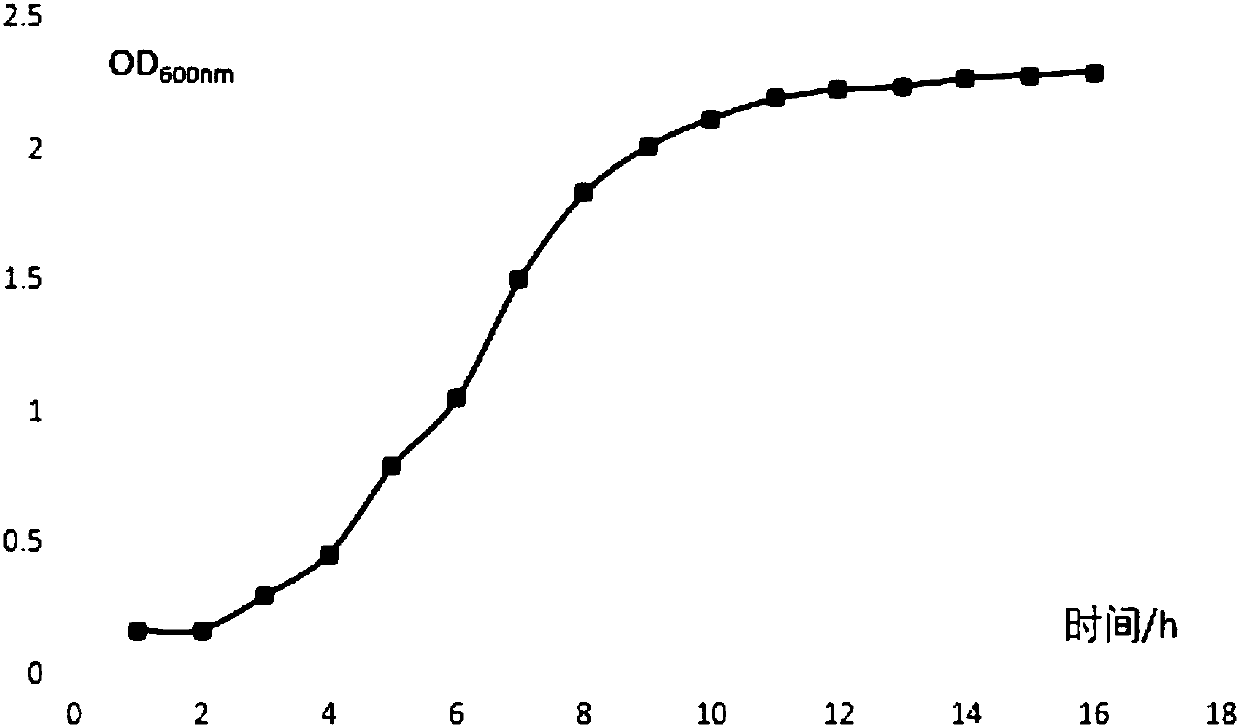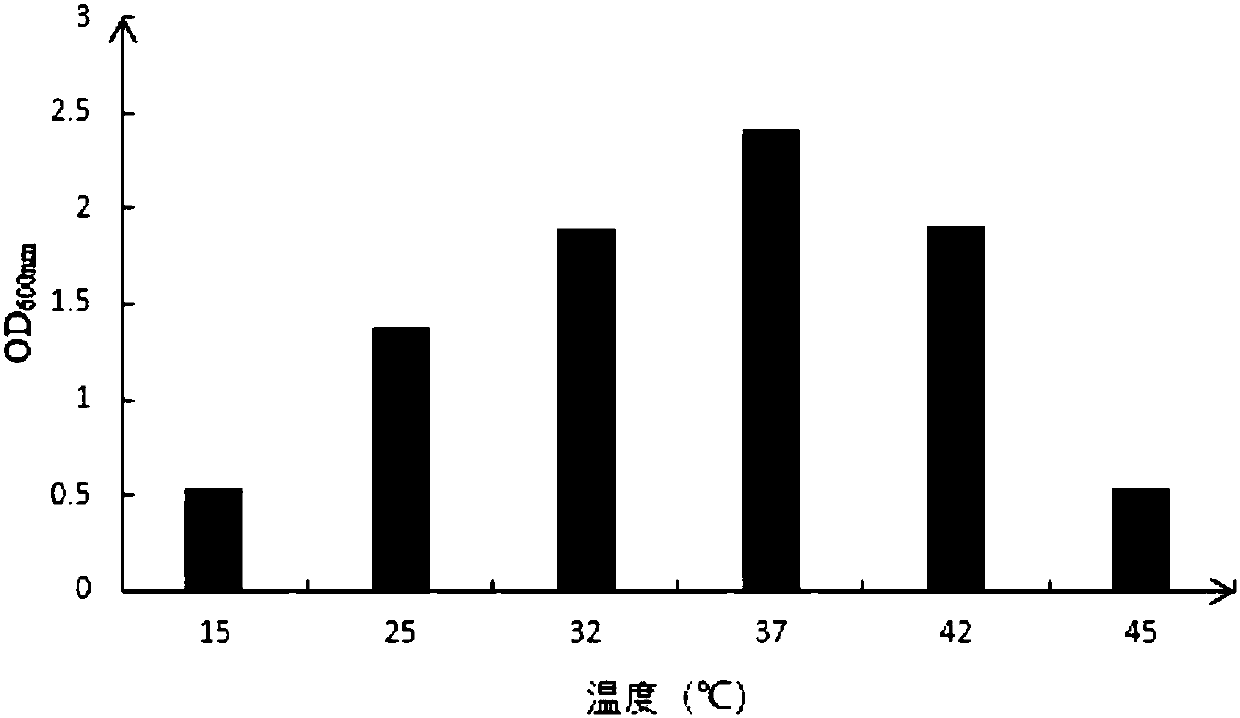Lactobacillus plantarum and application thereof in fruit enzyme product
A technology of Lactobacillus plantarum and fruit enzymes, applied in the field of microorganisms, can solve the problem of low biological activity
- Summary
- Abstract
- Description
- Claims
- Application Information
AI Technical Summary
Problems solved by technology
Method used
Image
Examples
Embodiment 1
[0067] A kind of collection, separation of Lactobacillus plantarum (Lactobacillus plantarum) SITCC No.10011, the steps are as follows:
[0068] (1), sample collection
[0069] Samples were taken from naturally fermented fruit and vegetable products, traditional fermented dairy products (milk fan, milk cake, yogurt, kumiss, etc.), raw milk, dough, kefir grains (Tibetan mushroom), silage, etc., and the collected Put the sample in an ice box to refrigerate, keep it at a lower temperature and bring it back to the laboratory and place it in a refrigerator at 4°C to separate the lactic acid bacteria as soon as possible;
[0070] (2), sample pretreatment
[0071] Take 10g of solid sample (20mL of liquid sample) into a 250mL Erlenmeyer flask (containing glass beads) filled with 90mL of sterile water, shake and let stand for 20min, and set aside;
[0072] (3) Preliminary isolation of lactic acid bacteria with high DPPH free radical scavenging ability
[0073]Use sterile water to ser...
Embodiment 2
[0082] The plant lactobacillus (Lactobacillus plantarum) SITCC No.10011 of embodiment 1 is carried out microbiological identification
[0083] (1), colony characteristics:
[0084] The Lactobacillus plantarum (Lactobacillus plantarum) SITCC No.10011 strain was isolated by streaking on the MRS plate, and cultured anaerobically at 37°C for 48 hours. The Lactobacillus plantarum (Lactobacillus plantarum) SITCC No.10011 strain grew well, and its colony was round and convex. The edges are neat, the color is milky white, slightly yellowish, opaque, the surface is moist and smooth, and it can be drawn when picked;
[0085] (2), Morphological characteristics of bacteria:
[0086] Adopt Gram staining method (Zhou Deqing. Microbiology Tutorial [J].2011.) Gram staining observation is carried out to the thalline of plant lactobacillus (Lactobacillus plantarum) SITCC No.10011 gained in step (1), the result See figure 1 shown, from figure 1 It can be seen from the figure that the bacteri...
Embodiment 3
[0101] Growth Characteristics of Lactobacillus plantarum SITCC No.10011
[0102] (1) Growth curve of Lactobacillus plantarum SITCC No.10011
[0103] Put the activated Lactobacillus plantarum (Lactobacillus plantarum) SITCC No.10011 into the MRS broth liquid medium at a 2% (v / v) inoculum size, culture at a constant temperature of 37°C for 16h, and measure the culture at 600nm every 1-2h The OD value of the liquid, in OD 600nm Value is plotted against time and obtains the growth curve of plant lactobacillus (Lactobacillus plantarum) SITCC No.10011 in MRS broth liquid medium, and its result is as follows figure 2 shown, from figure 2 It can be seen from the figure that Lactobacillus plantarum (Lactobacillus plantarum) SITCC No.10011 grows rapidly in the MRS broth liquid medium, enters the logarithmic phase in about 3 hours, and enters the stable phase in about 10 hours;
[0104] (2) Determination of optimum growth temperature of Lactobacillus plantarum SITCC No.10011
[010...
PUM
 Login to View More
Login to View More Abstract
Description
Claims
Application Information
 Login to View More
Login to View More - R&D
- Intellectual Property
- Life Sciences
- Materials
- Tech Scout
- Unparalleled Data Quality
- Higher Quality Content
- 60% Fewer Hallucinations
Browse by: Latest US Patents, China's latest patents, Technical Efficacy Thesaurus, Application Domain, Technology Topic, Popular Technical Reports.
© 2025 PatSnap. All rights reserved.Legal|Privacy policy|Modern Slavery Act Transparency Statement|Sitemap|About US| Contact US: help@patsnap.com



